From www.techspot.com
PC hardware releases have been rather dull this past year. Sure, there have been a few exciting ones, but the majority of launches (much like what we have today) have been a bit underwhelming. But don’t get us wrong, we’re big fans of price cuts, so that part of today’s release is something we’re totally on board with.
But that’s all we have today: a price cut. And we fear it may be too little, too late.
So, what brings us here today? It’s an awkward question to ask ourselves, considering we’ve been doing this job for well over 20 years.
One would assume that Nvidia’s “new” GeForce RTX 4080 Super is a special version of the original RTX 4080. But in reality, it’s essentially the RTX 4080 with a much-needed price cut.
The RTX 4080 has been reworked to create the RTX 4080 Super, now featuring the full AB103 silicon. This results in a slight increase in core count along with faster GDDR6X memory. Technically, the 4080 Super is a new product, but as you’ll see in a moment, it’s not much of a change.
The RTX 4080 Super gets a 5% increase in cores, a 2% frequency boost, and memory that’s clocked 3% higher. Overall, you can expect up to a 5% improvement in performance, with everything else, such as VRAM capacity, remaining the same. Earlier this month, we saw how the RTX 4070 Ti Super’s performance uplift was unremarkable, but compared to what we’re getting here, the 4070 Ti Super was kind of a big deal.
The more significant change brought by the RTX 4080 Super is pricing, with Nvidia reducing the MSRP from $1,200 to $1,000. But it’s clear that Nvidia was compelled to make this move as the RTX 4080 wasn’t very popular at the previous price point and mid-way through the product cycle, sales were lackluster.
Is the 17% price cut and a minor performance bump enough to revive the RTX 4080? To find out, we’re skipping all the individual game benchmarks, as the data is super unexciting. Instead, we’ll dive into the 12-game average data and examine cost per frame data. So let’s go do that…
Benchmarks
We’ll start with the 1080p data, because why not, we have it. Though many of the games tested were CPU-limited, it’s still worth examining. On average, the RTX 4080 Super is 2% faster than the original 4080, making it just 2% slower than the 7900 XTX. Now, let’s move on to the 1440p results.
Here, the 4080 Super is just 3% faster than the original 4080. Nvidia informed us well ahead of time to expect around a 3% uplift, and they were correct. They also emphasized that this release is really all about the new $1,000 MSRP.
Finally, at the 4K resolution, the 4080 Super is 4% faster than the original 4080. However, this means it was 9% slower than the 7900 XTX and 24% slower than the RTX 4090. For strictly rasterization performance, AMD still has a slight performance lead with the 7900 XTX. Now, let’s examine ray tracing.
Ray Tracing Benchmarks
Ray tracing performance remains a challenge for AMD. With a mix of titles, the 7900 XTX averaged 77 fps at 1440p. This makes the 4080 Super 31% faster, a substantial performance difference.
Cost per Frame (1440p Gaming)
Let’s look at the MSRP cost per frame data, based on rasterization performance. Compared to the original 4080, this new Super version offers 19% better value, thanks to slightly improved performance and a $200 discount. As with the other Super–refresh models, the RTX 4080 Super is really what the 4080 should have been when first released back in late 2022.
Highlighting just how poor value the original 4080 was, and still is, is the retail pricing data. The 19% improvement in value the 4080 Super offers still places it towards the bottom of our graph, but it at least matches what the 4070 Ti delivers. This isn’t ideal, but for a high-end GeForce 40 series GPU, it’s as good as it gets.
We weren’t impressed with the 4070 Ti Super, but having now seen the 4080 Super, it doesn’t seem that bad. At least with the 4070 Ti Super, you got an upgrade to 16GB of VRAM. For the 4080 Super to match the value of the 4070 Ti Super, it would need to cost no more than $940, but there seems to be some premium associated with the 4080 series branding.
As underwhelming as the $1,000 4080 Super looks here, it still manages to outcompete the $980 7900 XTX, despite costing 6% more per frame. We say this because the additional features of the GeForce GPU, which we will discuss later in the video, make the 4080 Super a better deal in our opinion, with advantages like superior ray tracing performance and higher quality upscaling.
Speaking of ray tracing, here’s a look at the cost per frame, based on our 10-game average data at 1440p. Previously, the 7900 XTX offered similar value to the RTX 4080, despite being a little over 20% slower on average. But with the updated pricing, the 4080 Super is over 20% better value than the 7900 XTX. Even the much cheaper previous generation Radeon parts can’t compete with the 4080 Super here.
Cost per Frame (4K Gaming)
Now let’s look at cost per frame using the 4K results. Again, we’ll start with the MSRP, to see where things should be and how these current generation models compare to previous generations.
At 1440p, we found that the 4080 Super was just 3% more costly per frame than the 7900 XTX. Now at 4K, the results further favor the Radeon GPU, as it’s now 9% better value. So, at least relative to the 7900 XTX, the 4080 Super offers better value at 1440p.
Then, looking at current retail pricing, we see that the 4080 Super is 12% more costly per frame than the 7900 XTX. For those interested purely in rasterization performance, this is the point where we feel the Radeon GPU starts to become a viable option, especially when it’s offering more than a 10% discount in terms of cost per frame.
Super Underwhelming
So there you have it, the RTX 4080 Super is 3 to 4% faster and costs $200 less. It’s a positive change, but is it enough after 14 months? Even if this had been the RTX 4080 that launched initially, it would have only been a mild improvement over the RTX 3080.
For it to be a true generational uplift, it would have needed to be priced no more than $800. This explains why the RTX 4080 was poorly received upon its launch and ultimately didn’t sell well. Of course, Nvidia’s not too phased, thanks to the staggering demand for AI GPUs. The company really lucked out when crypto went bust.
However, the question remains: Is a $1,000 RTX 4080 an attractive option in early 2024? We assume most who wanted this level of performance already opted for a 4080 at $1,200 or chose the Radeon 7900 XTX for $1,000. We’re not sure those who have been holding out for something better will be swayed by the 4080 Super.
If you are in the market for a high-end GPU and your budget can accommodate an RTX 4080 Super or 7900 XTX, which one should you get? For us, the RTX 4080 Super is an easy pick…
But if you are in the market for a high-end GPU and your budget can accommodate an RTX 4080 Super or 7900 XTX, which one should you get? For us, the RTX 4080 Super is an easy pick between those two if both are priced at around $1,000.
It’s easy enough to downplay ray tracing and upscaling as key selling points on GeForce GPUs priced at or below $500, and we don’t mean we go out of our way to do so. Rather, they’ve proven to be questionable features when looked at in-depth.
Lower-end GeForce GPUs, such as those in the RTX 4060 series, offer a heavily compromised ray tracing experience, both in terms of visual quality and frame rate performance. Moreover, upscaling doesn’t work very well at 1080p; the quality is quite poor as there simply isn’t enough pixel data to work with.
But for high-end GPUs that can provide frame rates north of 60 fps while making heavy use of ray-traced effects in games such as Cyberpunk, it becomes a key selling point, or at least it can be, depending on your preferences. Likewise, because you’re able to game at 1440p or 4K, upscaling becomes a useful tool as it works considerably better at higher resolutions and is fantastic at 4K.
So, you can lean much more heavily on Nvidia’s superior ray tracing performance and upscaling quality when comparing the RTX 4080 Super to AMD’s Radeon 7900 XTX. As it stands, the Radeon GPU is just 10% better value based on our 4K rasterized data, which means it needs to drop down to ~$900 at most to become competitive (it’s already down to $949 as of writing). Even then, many gamers will easily justify the $100 difference to take advantage of ray tracing and DLSS.
It will be very interesting to see if AMD is willing to make the much-needed pricing correction there. And that’s going to do it for this one. The RTX 4080 now officially costs $1,000, so let us know in the comments section below: Is that a good deal, and has it got you interested?
Shopping Shortcuts:
[ For more curated Computing news, check out the main news page here]
The post Nvidia GeForce RTX 4080 Super Review first appeared on www.techspot.com

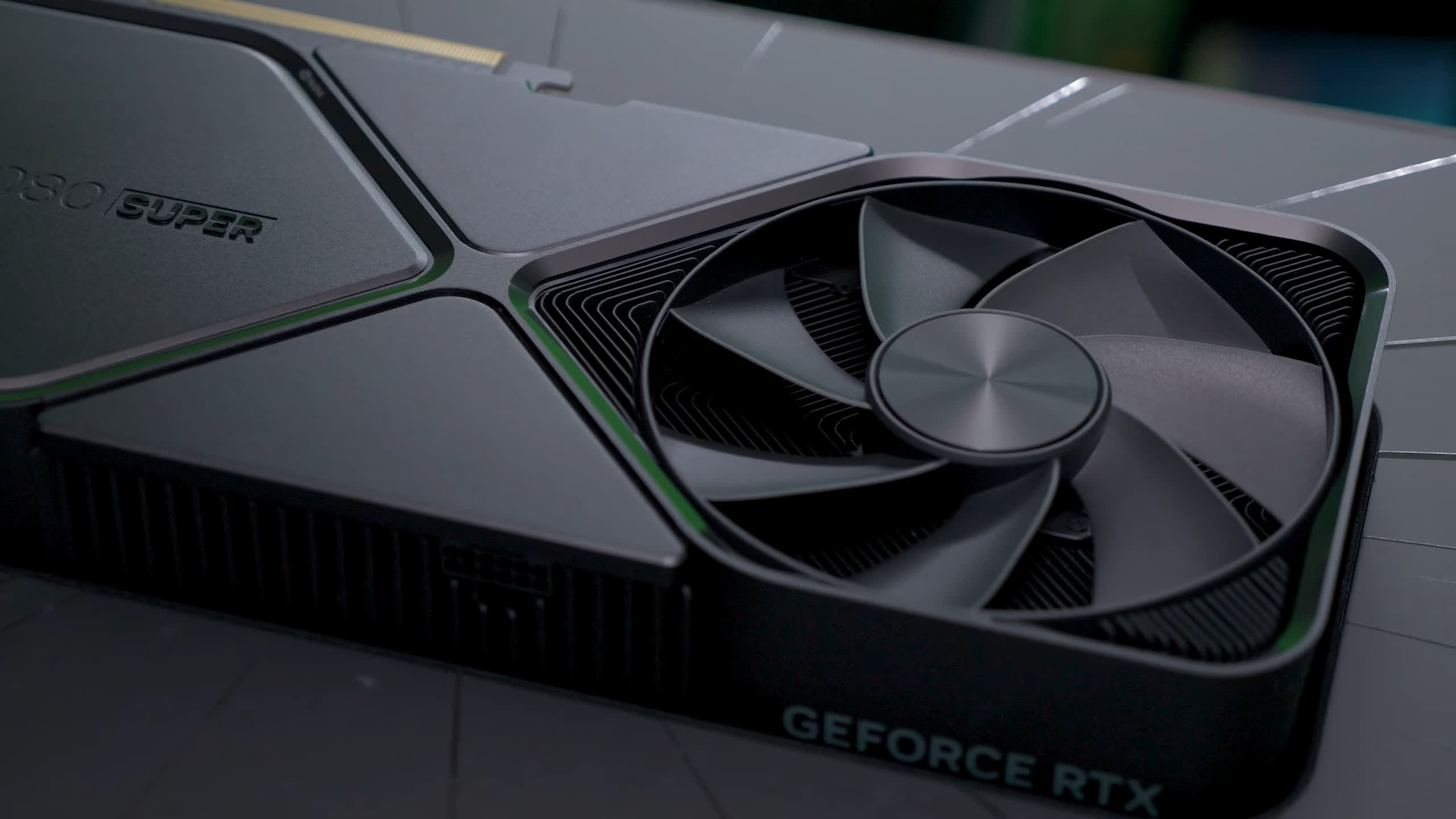

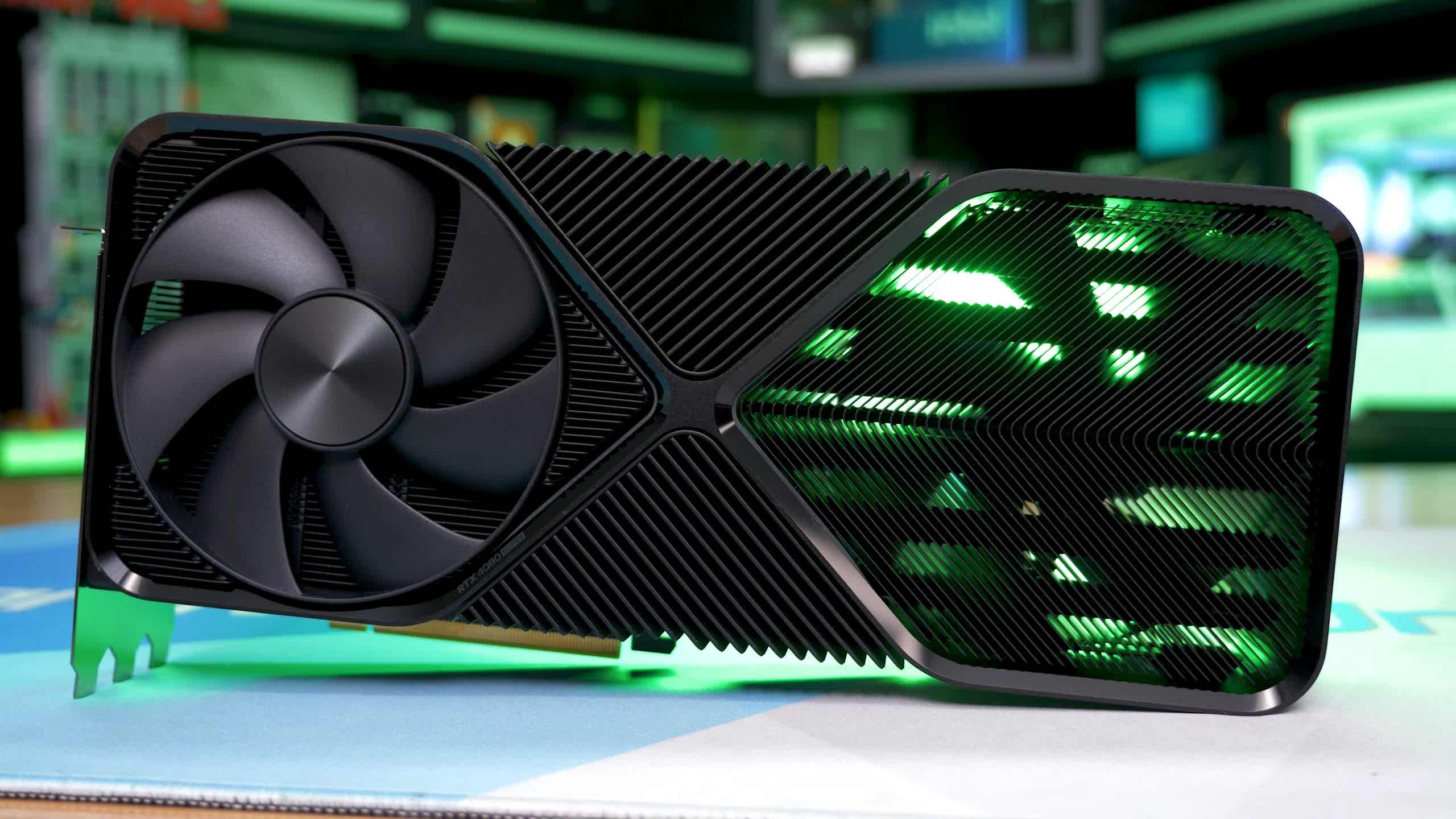


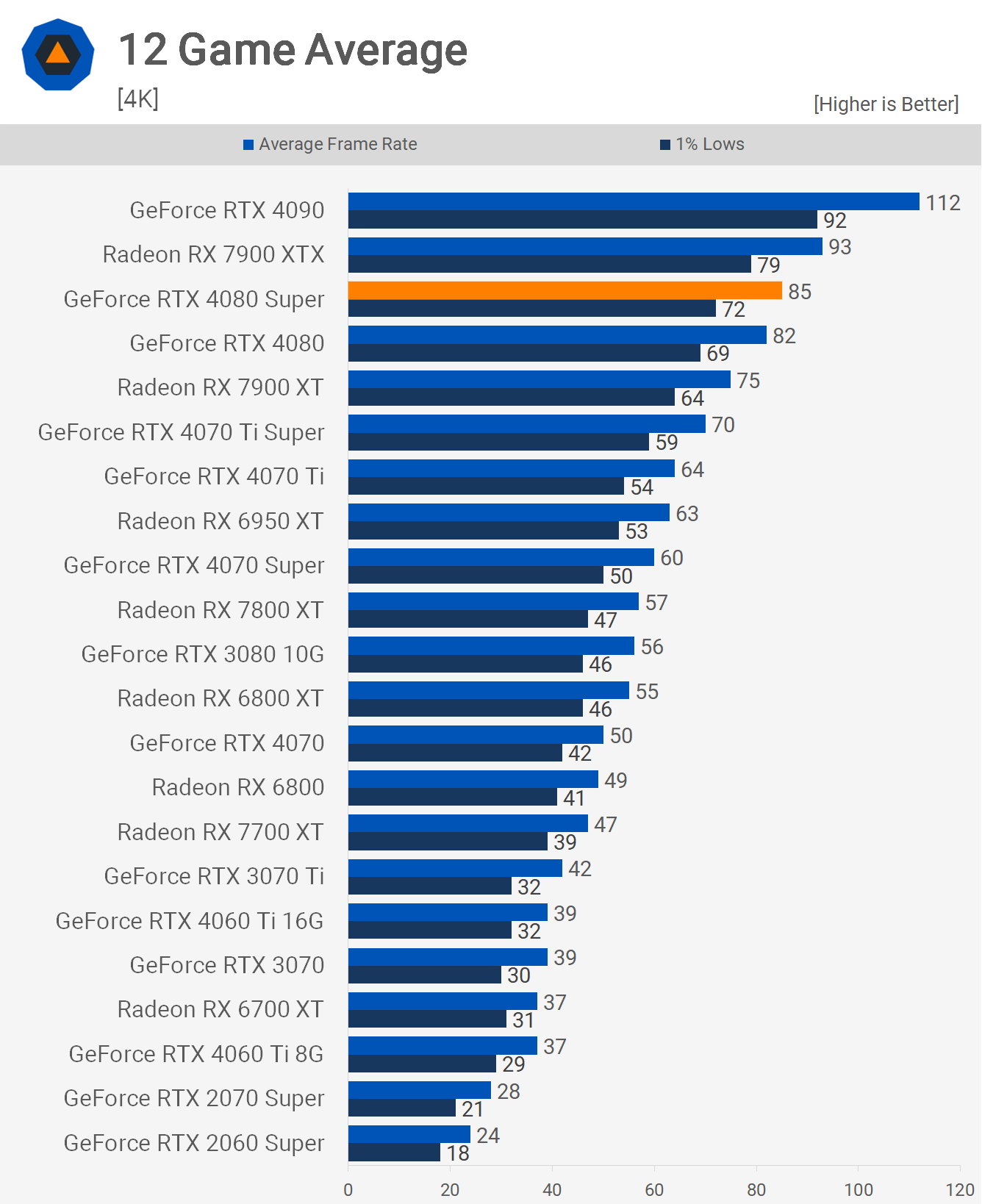


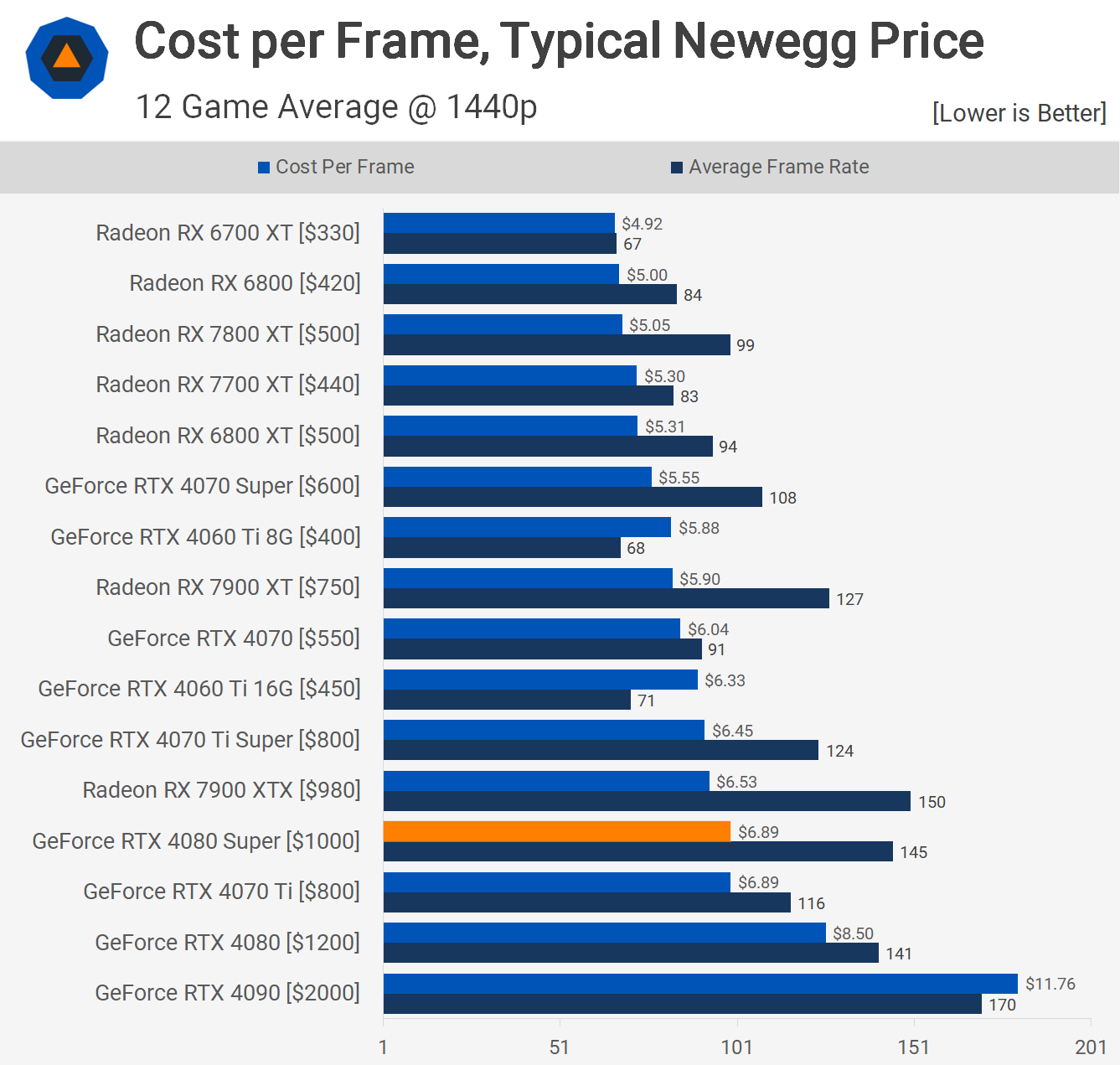


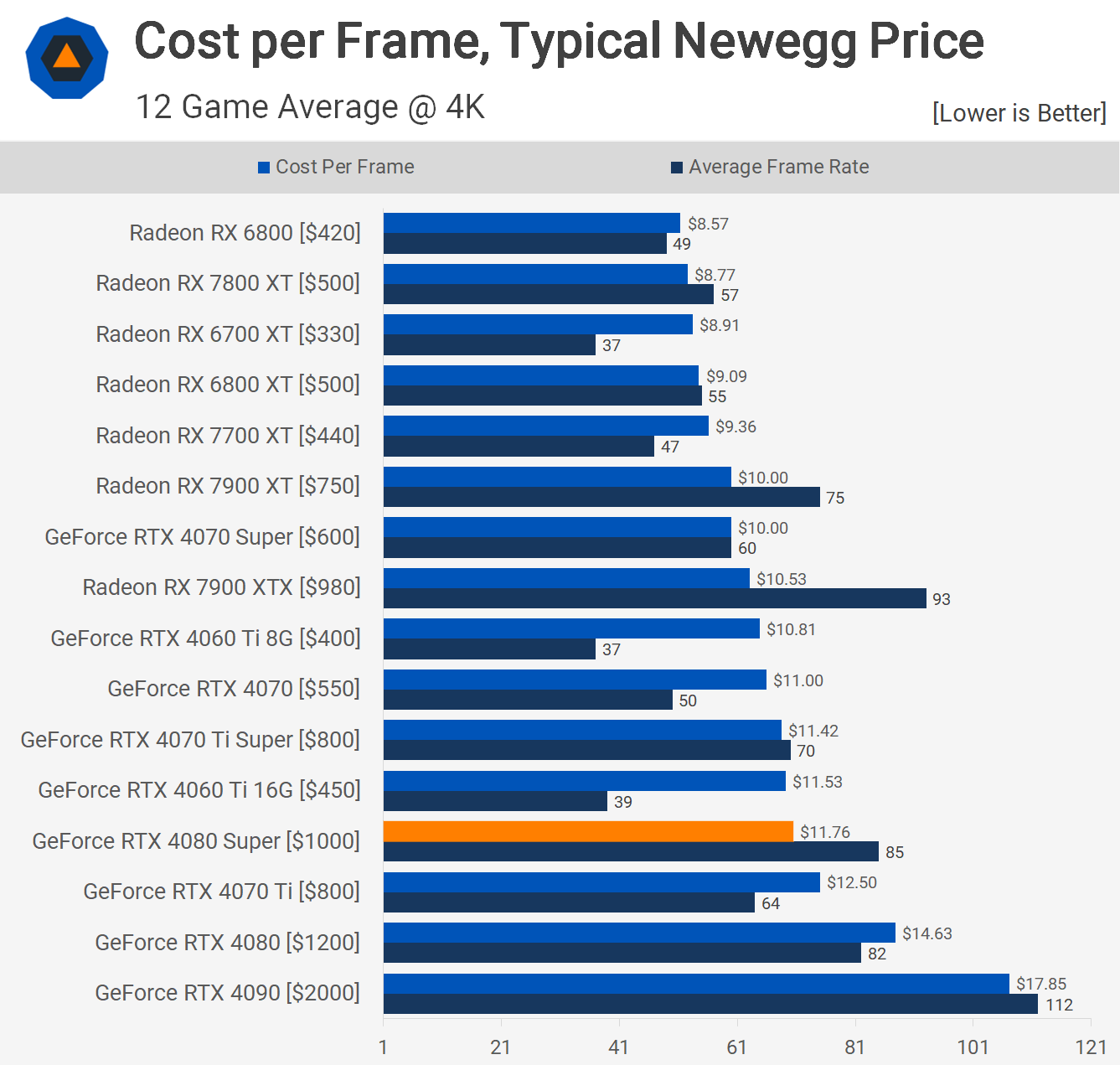



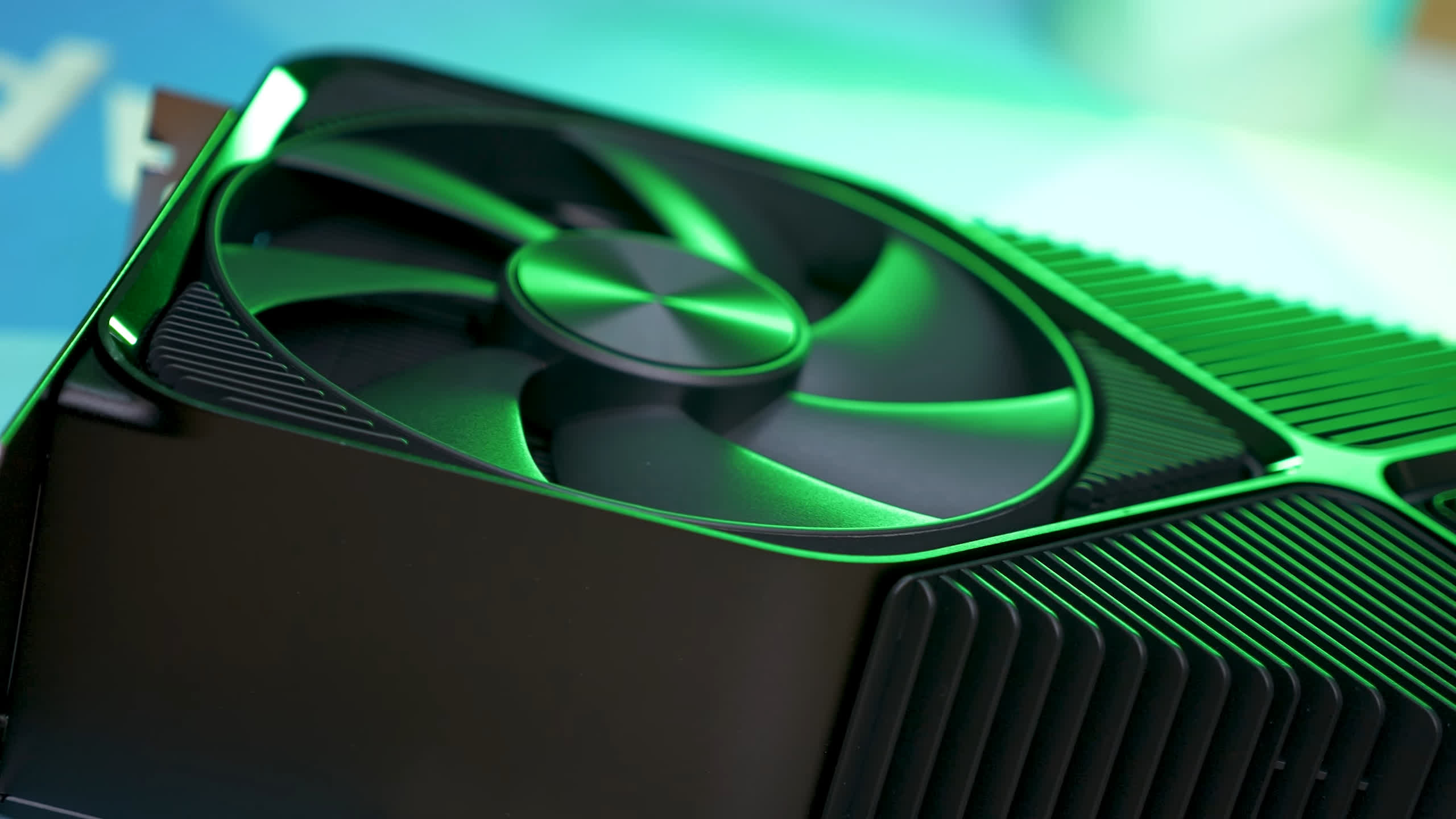




/cdn.vox-cdn.com/uploads/chorus_asset/file/25546355/intel_13900k_tomwarren__2_.jpg)








